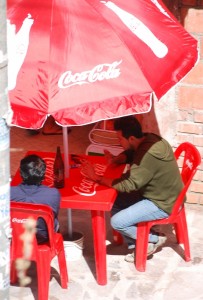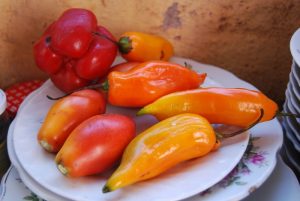Genetics and Food

Author Diana Kennedy recently threw a bomb into the Latin American food community when she argued that much current food is “fake”, no matter how much foodies and Anglo enthusiasts like it. While this will not make her popular in many circles, she joins a field of food writers making similar claims.
Many others lament the increasing industrialization of our food supply, the destruction of diversity in the food supply, and the loss of quality to shelf life.
One writer, however, puts these together in an important way that gives much more depth and urgency to the issue.
Gary Nabhan looks at food as far more than aesthetics, markets, or even than crops.
He is an ethnobotanist who holds a university position as a research social scientist at the University of Arizona. He is also a superb writer who brings the worlds of science and those of indigenous peoples together with the public.

Nabhan argued some years ago and updated the argument in a 2013 book, Food, Genes, and Culture, that the diversity of foods around the world need to be seen in tandem with two things: the diversity of people and evolution.

To put it simply, Nabhan argues people have tended to live for many generations in the same areas. As a result, their bodies and specific foods as well as varieties botanists call “landraces” have co-evolved.
Our physical selves, our genetics, are geared to the consumption of certain kinds of foods. Different foods, or engineered foods, are likely to create problems for us as a result, since they break the tight connection between locality and food that has been historically true for humanity.
Nabhan holds that the industrial foods, or even just generalized foods we all consume are wreaking havoc on our bodies. The lack of fit between the food many of us eat and our genetics is implicated in the widespread problems of obesity and diabetes, as well as metabolic syndrome, that are increasingly common.
His book looks at a few important examples. Unfortunately, for us, he does not explore the relationship between food variety and genetics in Peru.
His concern is not only one for those of us who live in the United States, but is also a worry for all the Peruvians who have left the regions where their families may have lived for generations and migrated to the cities, changing food as a result.
Nabhan claims much of medicine and especially nutrition generalize to humanity as a whole. As a result, they are not able to easily grasp the relationships of local populations, often small, with their food, one that connects their health and their genes with what they have eaten for generations.
However, even in a general sense, Peru has a problem. Increasingly, Peruvians rely on beer, soda pop, pollo a la brasa, fried rice, beef, and hamburgers, even though pockets of traditional cuisine and food production remain. If Nabhan is right, in them lie solutions.

I looked in the scientific literature and could find no studies that looked at the relationship of the population genetics of Peruvians to the food they consume.
I saw nothing like the vast literature surrounding the genetic mutations allowing some people to consume milk as adults, that which looks at how tasting hot peppers relates to genes, and so on.
Nevertheless, this is an important piece for understanding contemporary health problems in Peru. It is also important for valuing traditional foods and their relationship to promoting a healthy life among contemporary peoples.
There is wonderful research in Peru on biodiversity and on the relationship of particular land races to ecological and econpomic regimes. Yet the genetic piece is missing.
The coevolution of the genetics for food and people need to be studied. I hope someone will do it.




